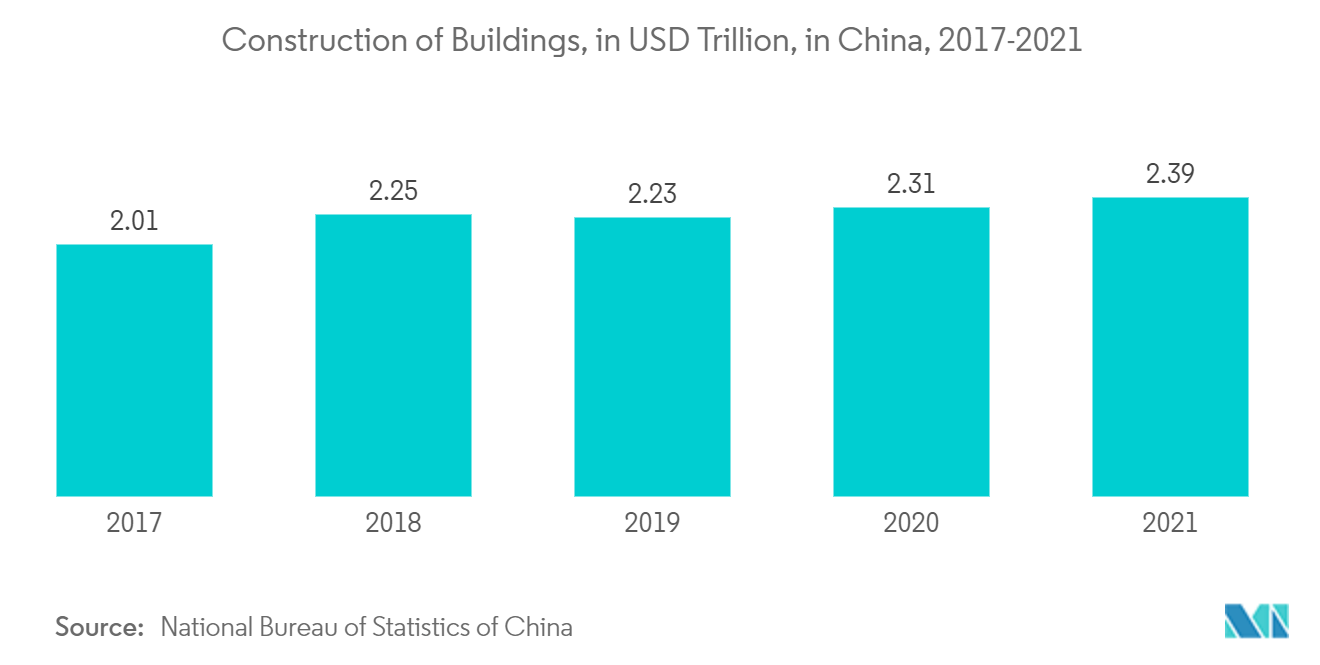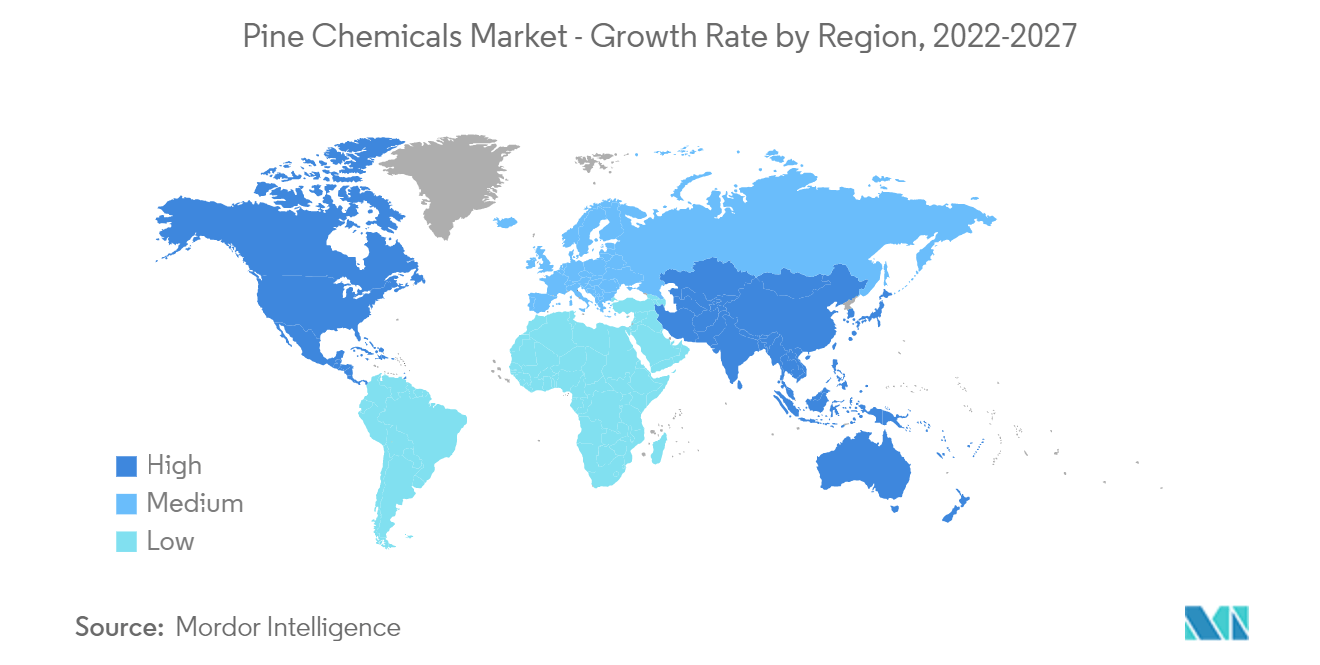Market Trends of Pine Chemicals Industry
This section covers the major market trends shaping the Pine Chemicals Market according to our research experts:
Adhesives And Sealants Segment to Dominate the Market
- Pine chemicals have been important parts of the adhesives and sealants value chain for many years.Tall oil products (TOFA and DTO) and rosin products (TOR and gum rosin) are excellent tackifiers for adhesives.
- In adhesives, rosin resins are used along with polymers, which form one of the major components of adhesives and thus generate cohesion. The TOR resins offer three important benefits, which include:
- compatibility with a variety of polymers, which provides flexibility and reliability in the formulation.
- chemical tailoring of rosin resin to provide unique adhesive performance;
- They are derived from natural and renewable sources.
- Other types of pine chemicals, on the other hand, are well suited for use in adhesives and sealants applications:
- Glycidyl methacrylate monomers made from rosin are a thick liquid that can be used as an advanced tackifier in pressure-sensitive adhesives that crosslink when exposed to UV light.
- Rosin-oil dimer acids, prepared from rosin and industrial fatty oils, can be used in acrylic adhesives to improve their wetting, adhesion, and thermal stability.
- Rosin-tung oil Diels-Alder adduct, a yellowish solid prepared from levopimaric acid and tung oil, can be used as a filler, tackifier, and adhesion promoter in UV-curable adhesives.
- Pine Chemicals Association (PCA) seeks to identify collaboration opportunities and build partnerships with the adhesives and sealants industry as food and packaging safety is of concern to adhesives and sealant manufacturers worldwide.
- In 2021, the Asia Pacific region accounted for around 37% of the global adhesives and sealants market, followed by Europe at 35%. According to FEICA, the European adhesives and sealants market is forecast to grow to EUR 22.2 billion (USD 25.91 billion) over the next four years, growing at a CAGR of 3.6% during the forecast period.
- Furthermore, strong growth in the construction industry has propelled the consumption of adhesives and sealants, thereby propelling the pine chemicals market's growth. China is the world's largest construction market and is forecasted to grow at an average annual rate of 8.6% between 2022 and 2030. The construction of buildings accounted for around USD 2.39 trillion in 2021 and is expected to reach around USD 2.6 trillion over the next three years.
- The rising application of adhesives and sealants in the automotive and construction industries is likely to boost the overall specialty chemicals industry in the coming years.

Europe Region to Dominate the Market
- Europe dominated the market studied, accounting for more than 40% of the total market by volume, with Germany and Italy being the key consumers in the region.
- According to the German Adhesives Association, the adhesives, sealants, and tape industries will generate an annual turnover of more than EUR 4 billion (USD 4.57 billion) in 2020.
- Germany is the largest producer of general rubber goods (GRG) and tires in Europe. Continental AG, Dunlop GmbH, Michelin Tire Werke AG & Co. KGaA, Pirelli Deutschland GmbH, Freudenberg Group, etc., are some of the major manufacturers of tire and non-tire products in the country.
- In response to market changes in Europe that favor larger rim diameter tires, the major players in the tire industry are expanding and contracting in Germany at the same time.The disruptions in tire manufacturing are likely to have a short-term impact on the market studied.
- Furthermore, Germany will produce 54 thousand barrels of oil equivalent biofuels per day in 2021, according to the Energy Information Administration (EIA) and BP Plc.Of this total, rapeseed and used cooking oil accounted for the highest proportion of raw materials in biodiesel production. Tall oil, along with other products, accounts for around 4%.
- The volatile legislation on biofuels prevents companies from investing in new technologies. The German biofuel industry needs a stable framework for continuous market growth.
- In the first half of 2022, the use of biodiesel and hydrotreated vegetable oil (HVO) for blending amounted to around 1.23 million metric tons. This translates to a 6.3 percent increase over the same period in 2021. This will continue to grow during the forecast period, thereby propelling the demand for pine chemicals.
- Germany is the largest lubricant producer in Europe. The country is renowned for its sophisticated engineering sector and lubricant innovation. Strong industrial sector growth in the region has boosted metalworking fluid volumes, predicting a stable market for the overall lubricant market in Germany.
- According to the Federal Office of Economics and Export Control, the domestic deliverables of lubricants in the country increased by 7.1%, from 814.21 thousand tons in 2020 to 871.90 thousand tons in 2021. During the forecast period, the demand for pine chemicals is expected to be driven by the rise in production in Germany and the rise in the need for lubricants.
- Also, the Italian paints and coatings market is highly fragmented, with around 600 manufacturers of decorative and architectural paints in the country. The Italian Construction Association (ANCE) says that there will be more investment in the construction industry.
- There are also numerous lubricant blending units in the country.Moreover, Eni is Italy's leading operator in the refining and distribution of petroleum products. The company offers lubricants to multiple industries.
- The country is focused on shifting to biofuels for transportation and other applications. The country consumed 22 thousand barrels of oil-equivalent biofuel per day in 2021, compared to 21 thousand barrels of oil-equivalent biofuel per day in 2020. The growing demand for biofuels is estimated to drive the demand for pine chemicals during the forecast period.
- Such factors, in turn, are expected to boost the market studied.

